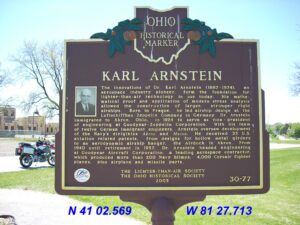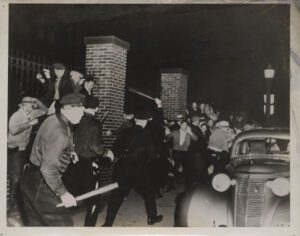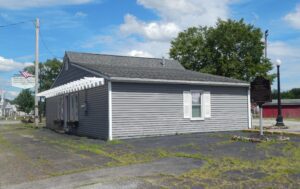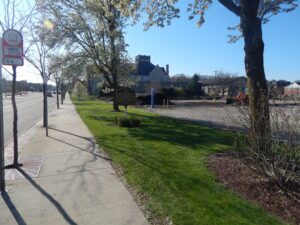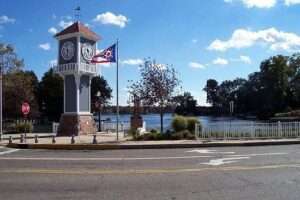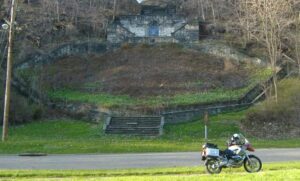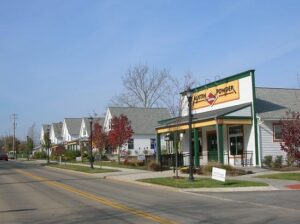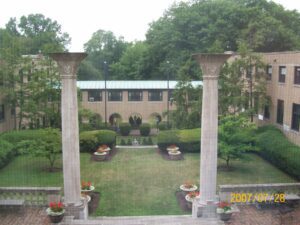, OH
The innovations of Dr. Karl Arnstein (1887-1974), an aerospace industry pioneer, form the foundation for lighter-than-air technology in use today. His mathematical proof and application of modern stress analysis allowed the construction of larger, stronger rigid airships. Born in Prague, he led airship design at the Luftschiffbau-Zeppelin Company in Germany. Dr. Arnstein immigrated to Akron, Ohio, in 1924 to serve as vice-president of engineering at Goodyear-Zeppelin Corporation. With his team of twelve German immigrant engineers, Arnstein oversaw development of the Navy’s dirigibles Akron and Macon. He received 35 U.S. aviation related patents, from designs for hollow metal girders to an aerodynamic airship hanger, the Airdock in Akron. From 1940 until retirement in 1957, Dr. Arnstein headed engineering at Goodyear Aircraft Corporation, a leading aerospace contractor, which produced more than 200 Navy blimps, 4,000 Corsair fighter planes, plus airplane and missile parts.
, OH
Five Depression-era strikes against many of Akron’s rubber companies culminated in a giant “sit-down” strike against Goodyear Tire and Rubber Company, the industry’s leader, in February and March of 1936. The fledgling United Rubber Workers (URW), created in September 1935, used the tactic of being at work but not working that had been pioneered by rank-and-file workers in a successful 1934 strike against the General Tire and Rubber Company. After a peaceful month-long strike, the URW won recognition from Goodyear and reached a settlement on March 22. The 1936 Akron Rubber Strike was one of the earliest successes for the Committee for Industrial Organization (CIO), sparking a wave of industrial organizing and similar strikes in 1936 and 1937. The “sit-down” strategy extended beyond the rubber industry and was instrumental in the founding of the industrial union movement in the United States.
, OH
In January 1827, the Ohio State Legislature chartered the Pennsylvania & Ohio Canal Company to build an east-west “cross cut” canal connecting north-south canals in Ohio and Pennsylvania. The route ran from the Beaver Canal in Pennsylvania to the Ohio & Erie Canal in Akron. In Ohio, the canal ran through the towns of Youngstown, Warren, Leavittsburg, Newton Falls, Ravenna, and Akron. Specifications called for the canal to be no less than 28 feet wide at the botton, no less than 40 feet wide at the waterline, and at least four feet deep. Towpaths were at least 10 feet wide and 2.5 feet above the water. (Continued on other side)
, OH
On May 1, 1950, the Akron Community Service Center and Urban League building opened to the public. The Center was a gathering place for African Americans of the community, where they addressed workplace, education, and other issues dividing the city. Directors included the late George W. Thompson, Raymond Brown, and Vernon L. Odom. The Center provided space for meetings, classes and receptions and had a swimming pool and gymnasium. The Center also hosted talent shows, which included the musicians who became Ruby and the Romantics. The group scored a #1 hit in 1963 with “Our Day Will Come.”
, OH
The land on which Coventry Township is situated was ceded in 1785 to the United States by the Delaware, Chippewa, Ottawa, and Wyandot tribes under the Treaty of Fort McIntosh. The area was a choice location for Native Americans, settlers, and fur traders due to the abundant bodies of water and proximity to the Portage Path, a land connection between the Tuscarawas and Cuyahoga rivers and Lake Erie. In 1788, Coventry Township was initially part of Washington County, the first county formed in the Ohio Territory. After Moses Warren finished a survey in 1797, a succession of county splits located Coventry Township in Jefferson County, Trumbull County, Portage County, and, finally, Summit County in 1840. The township originally encompassed Summit Lake and the lands south to the southern line of the Western Reserve (Green-New Franklin lines). Daniel Haines was the first resident to settle in Coventry Township in 1806.
, OH
Built over a two-year period, from 1936-1937, by the Federal Works Progress Administration, the Glendale Steps survive as a monument to the work of stone craftsmen during the Great Depression. Spanning a 200-foot slope, the purpose of the Glendale Steps was to enable Akron residents to descend from South Walnut Street to a city park along Glendale Avenue. The 242 sandstone steps were dressed on site and hand laid by WPA laborers at a cost of $22,000. Depression-era budget problems prevented the City of Akron from completing planned improvements to the park.
, OH
The Village of Glenwillow was developed and has survived over the last century as a rural enclave whose character has been shaped by the Austin Powder Company. Glenwillow began as a company town of the Austin Powder Company, which relocated its explosives factory from Cleveland in 1892. The Falls Junction Depot was originally built in 1883 and located approximately 1/4 mile to the north at the junction of the existing Wheeling and Lake Erie track and a rail line that connected to Chagrin Falls. The Depot was moved to its present location when Austin Powder Company relocated to Glenwillow. Passenger trains on the Wheeling and Lake Erie Railway provided Glenwillow residents access to the larger cities of Cleveland, Kent, and Akron, and provided a route for Austin Powder to ship its explosives to mines in southeast Ohio. The Depot, which operated until 1974, is now an important component to the revitalization of the Glenwillow Town Center.
, OH
Elm Court, designed by Howard Van Doren Shaw of Illinois, was built in 1912 for Arthur Hudson Marks. The original mansion exemplifies the Italian Renaissance Revival style. Elm Court included the mansion, barn, stables, carriage house, pond, and a variety of trees, especially elms, on 33 acres. Arthur Marks was the inventive genius in chemistry and business who revolutionized the rubber industry in Akron. He was best known for inventing the alkaline-recovery vulcanization process in 1899, the cord tire, the chemical research laboratory system, and placing rubber research on a scientific basis. In World War I he served as director of chemical warfare services. Marks served as vice-president of B.F. Goodrich Company and Curtis Airplane and Engine Company and president of other rubber companies and the Aeolian Skinner Organ Company.


